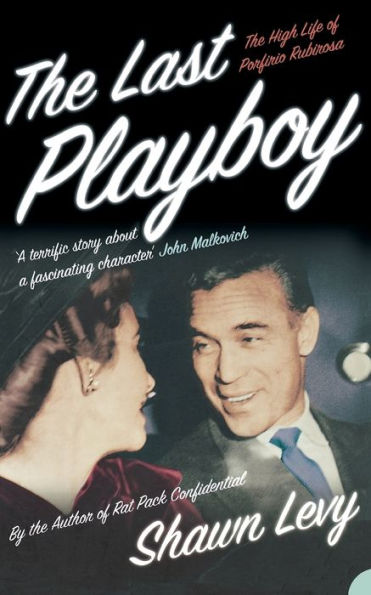A scandalous story of money, drugs, fast cars, high politics, lowly crime, hundreds of beautiful woman and one man, Porfirio Rubirosa from the celebrated author of RAT PACK CONFIDENTIAL.
The Dominican playboy Porfirio Rubirosa died at 8:00 am on July 5, 1965, when he smashed his Ferrari into a tree in Paris. He was 56 years old and on his way home to his 28-year-old fifth wife, Odile Rodin, after a night's debauch in celebration of a victorious polo match.
In the previous four decades, Rubirosa had on four separate occasions married one of the wealthiest women in the world, and had slept with hundreds of other women including Marilyn Monroe, Zsa Zsa Gabor, Ava Gardner, and Eva Peron. He had worked as aide-de-camp to one of the most vicious fascists the century ever knew. He had served as an ambassador to France, Germany, Belgium, Italy, Argentina and Vichy. He had been a jewel thief, a forger, a shipping magnate, a treasure hunter. He had held his own with the world's most powerful and notorious men including John F. Kennedy, Josef Goebbels and Juan Peron. He ran comfortably celebrity circles, counting among his friends Frank Sinatra, Ted Kennedy, David Niven, Sammy Davis Jr., and fellow playboy Aly Khan.
He lived for the moment and, at his death, faded without a legacy: no children, no fortune, no entity - financial, cultural, even architectural - that bore his name. There will never be anyone else like Porfiro Rubirosa. Indeed, the really amazing thing is that there ever was. Shawn Levy - celebrated author of RAT PACK CONFIDENTIAL, and READY, STEADY, GO - has been given unique access to primary material including FBI and CIA files in his search for the last playboy.
A scandalous story of money, drugs, fast cars, high politics, lowly crime, hundreds of beautiful woman and one man, Porfirio Rubirosa from the celebrated author of RAT PACK CONFIDENTIAL.
The Dominican playboy Porfirio Rubirosa died at 8:00 am on July 5, 1965, when he smashed his Ferrari into a tree in Paris. He was 56 years old and on his way home to his 28-year-old fifth wife, Odile Rodin, after a night's debauch in celebration of a victorious polo match.
In the previous four decades, Rubirosa had on four separate occasions married one of the wealthiest women in the world, and had slept with hundreds of other women including Marilyn Monroe, Zsa Zsa Gabor, Ava Gardner, and Eva Peron. He had worked as aide-de-camp to one of the most vicious fascists the century ever knew. He had served as an ambassador to France, Germany, Belgium, Italy, Argentina and Vichy. He had been a jewel thief, a forger, a shipping magnate, a treasure hunter. He had held his own with the world's most powerful and notorious men including John F. Kennedy, Josef Goebbels and Juan Peron. He ran comfortably celebrity circles, counting among his friends Frank Sinatra, Ted Kennedy, David Niven, Sammy Davis Jr., and fellow playboy Aly Khan.
He lived for the moment and, at his death, faded without a legacy: no children, no fortune, no entity - financial, cultural, even architectural - that bore his name. There will never be anyone else like Porfiro Rubirosa. Indeed, the really amazing thing is that there ever was. Shawn Levy - celebrated author of RAT PACK CONFIDENTIAL, and READY, STEADY, GO - has been given unique access to primary material including FBI and CIA files in his search for the last playboy.

The Last Playboy: The High Life of Porfirio Rubirosa
368
The Last Playboy: The High Life of Porfirio Rubirosa
368
Product Details
| ISBN-13: | 9780007171071 |
|---|---|
| Publisher: | HarperCollins Publishers |
| Publication date: | 05/19/2016 |
| Pages: | 368 |
| Sales rank: | 651,848 |
| Product dimensions: | 5.00(w) x 7.80(h) x 0.90(d) |
